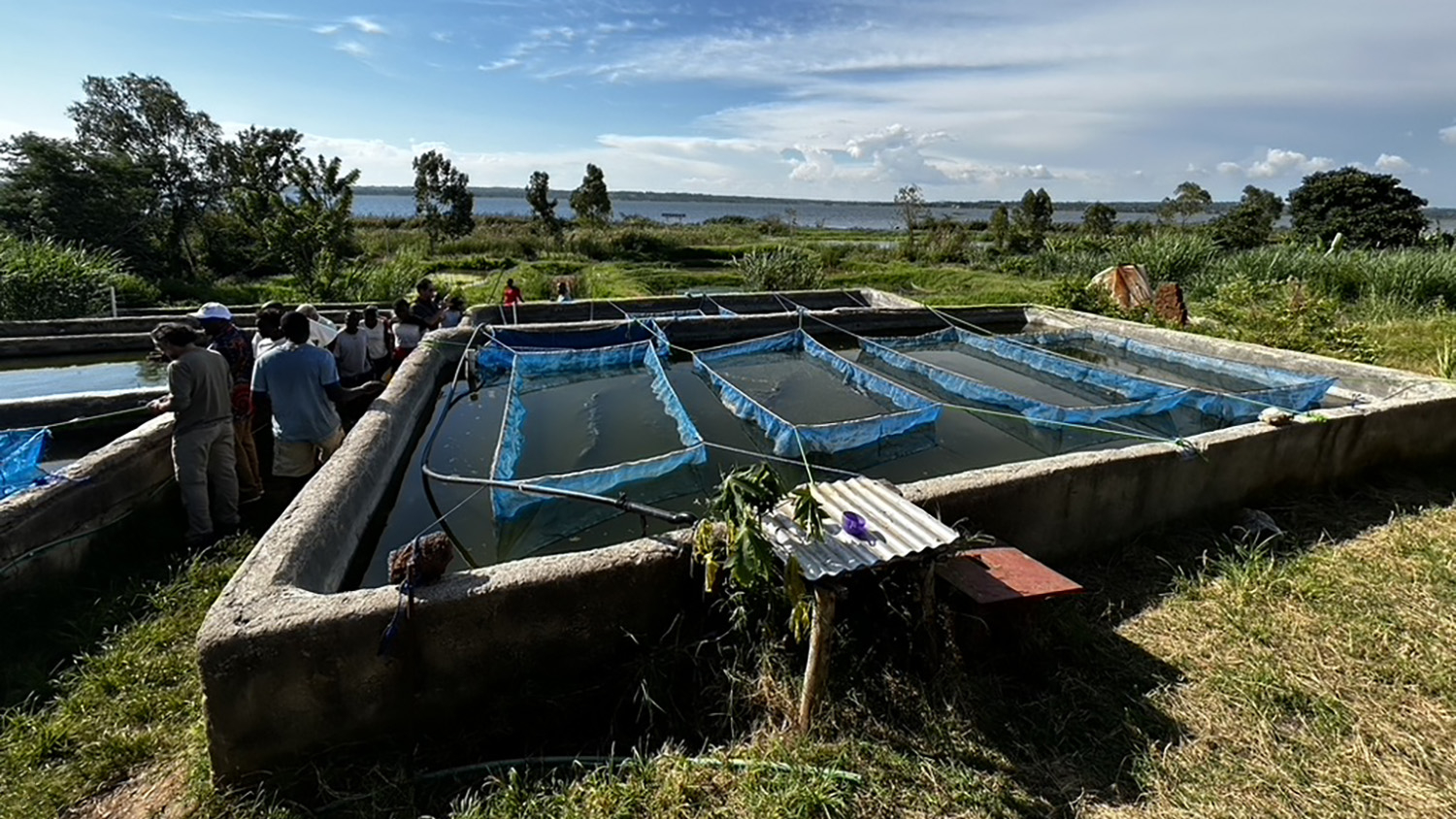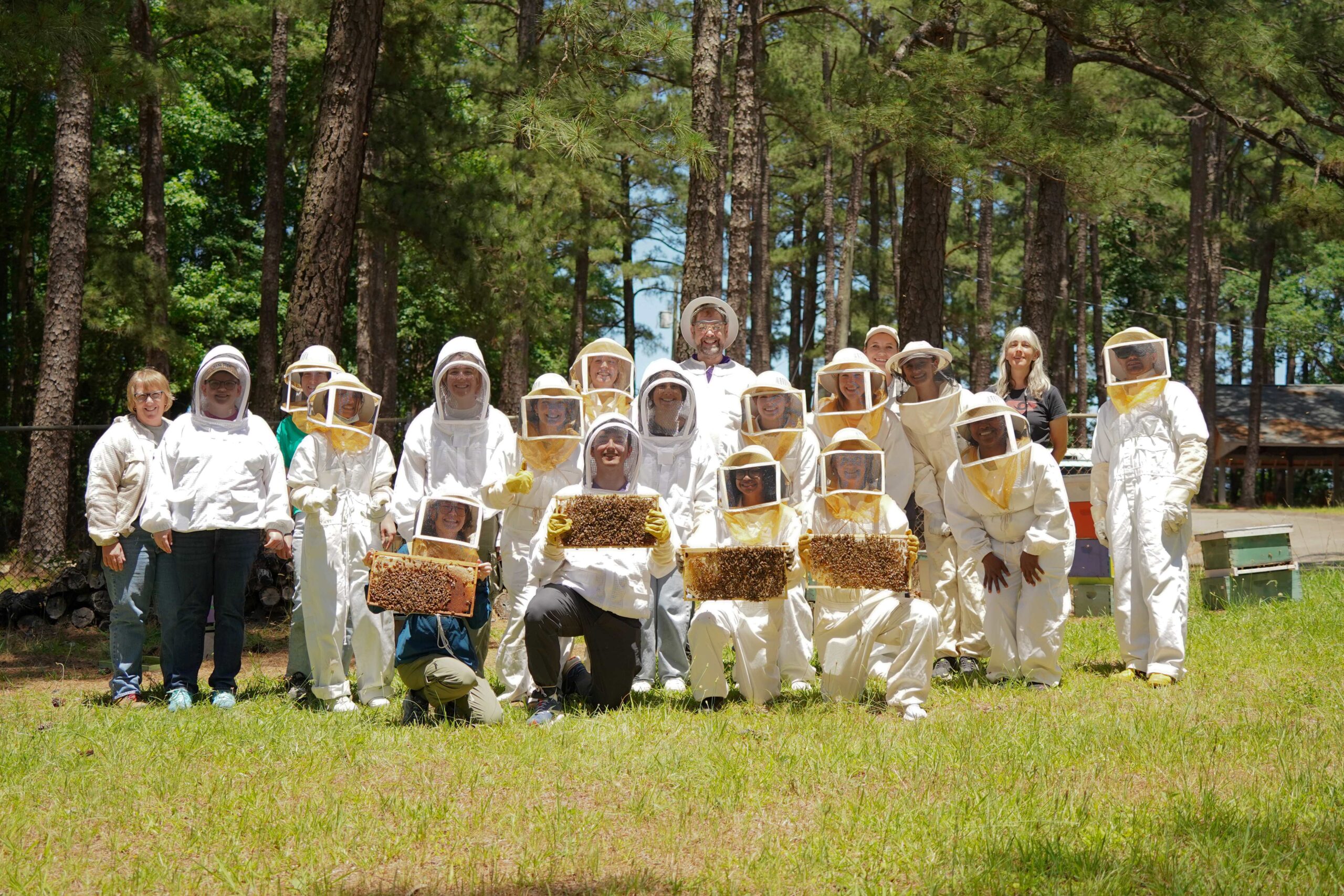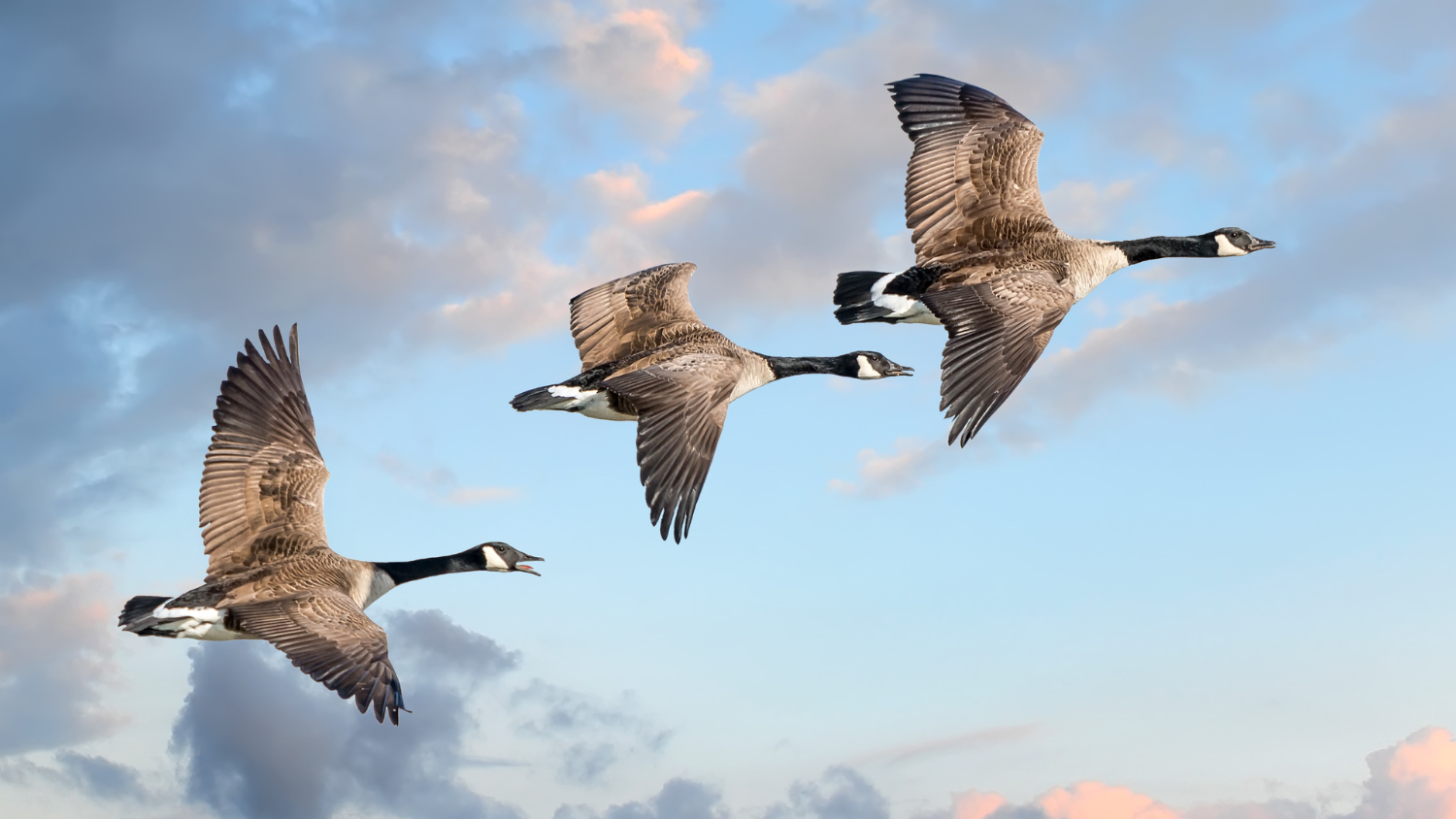Get Curious with Urban Entomologists
A city dweller hears “urban entomology,” and one thing comes to mind: pests. But urban entomology encompasses a whole world of insects that need preserving, not controlling.
On this episode of the Farms, Food and You podcast, learn why creepy crawlies in our cities make up a vital part of our ecosystem from NC State Assistant Professor and Extension leader Elsa Youngsteadt and entomologist and science writer Eleanor Spicer-Rice. You might find yourself more curious and aware of the insects and mites living in and around your city.
Learn More About the Researchers
- Elsa Youngsteadt is an assistant professor and Extension leader at NC State. Her research in the Urban Ecology Lab works at the interface of urbanization and climate change to understand how organisms, populations, and ecological interactions respond to anthropogenic stressors–and what we can do about it.
- Eleanor Spicer-Rice received her Ph.D. in entomology from NC State and is a prolific author with articles covering myriad topics, from belly button biodiversity to blue crabs in bathtubs. She is the author of several books, including Dr. Eleanor’s Book of Common Ants, Dr. Eleanor’s Book of Common Spiders, Ants: Workers of the World, and Unseen Jungle: The Microbes that Secretly Control Our World.
[buzzsprout episode=”13621880″ player=”true”]
Podcast Transcript
HOST:
A city dweller hears “urban entomology,” and one thing comes to mind: pests. Okay, so maybe pest control pops in there, too. But urban entomology encompasses a whole world of insects that need preserving, not controlling.
Today on Farms, Food and You, we learn from two NC State-trained entomologists that the creepy crawlies in our cities make up a vital part of our ecosystem. Listen as NC State Assistant Professor and Extension leader Elsa Youngsteadt and entomologist and science writer Dr. Eleanor Spicer-Rice illuminate urban entomology. You might find yourself more curious and aware about the insects and mites living in and around your city.
Spicer-Rice earned her doctorate in entomology from NC State where she studied ants, pest control and more. She now writes prolifically about the organisms in and around us. She explains that we can’t really talk about urban entomology without also considering the urban ecology, starting with the idea that not all insects we encounter are necessarily pests.
SPICER-RICE:
We should probably talk about what a pest is. A pest is either something that bothers us, something that could hurt us, or something that could cause medical or economic harm to humans. So, a pest can be different things for different people. But I came, and I started looking at the ants, and I realized that everybody was always asking me how to kill all of these things that live around us. Or they would say, how does it help me? Can it cure cancer? A lot of people at the time were wondering if random things we should learn about them because they could cure cancer. And that’s not the point of these creatures. And so I wanted to share how amazingly diverse and layered our lives actually are. One of the ways that we can do that is by looking at all the creatures that are living around us. There are a hundred different species of arthropods, on average, living in our homes with us. And most of those aren’t pests, but we wake up with them literally in our beds in the morning. So it’s wonderful and exciting.
HOST:
Once you’re comfortable sharing space with all those arthropods you may not see cohabitating with you in your urban home, Spicer-Rice suggests you get curious instead of grossed out.
SPICER-RICE:
Entomology is not just pest control. Entomology basically is anything that you might find remotely interesting about the world because insects are so ubiquitous, and they are so important to our daily lives and to the world’s daily life, the life of the planet, that if you are interested in entomology, you’re not just spraying them with poison when you go to graduate school, although I did do that, but some of it. But you basically can do anything in the world of entomology. You can do ecology, you can do behavior, you can do all kinds of wonderful things. And another thing is that pest control also is not just spraying chemicals on things. Pest control is learning how to protect our waterways and how to reduce people’s exposure to chemicals that might be harmful.
It’s not like the age of DDT. People are trying really hard to keep things as safe as possible, not just for humans but for the wider world. So, it’s not this big evil thing that we think of when we think about pest control. Sometimes, it’s as simple as just cutting the branches that are touching your house or cleaning out your gutters. That’s way more effective than hiring a guy to come and dump a bunch of poison in your house.
So when we’re talking about pest control, that’s one. And it’s also limiting its impact on things that aren’t pests. So, there are a lot of wonderful aspects to the career of entomology, and there are a lot of things that are not pest control. One woman in the entomology department found out that just going into people’s yards and dumping out all of their flower pots and containers was equally effective at reducing mosquitoes in their area than giving somebody spray your yard with it. So there are a lot of things that they are studying at NC State that are not at all these boring nerds in a basement kind of things that you’re thinking about, or these evil guys with a spray container in a suit. It’s actually a wonderful and diverse field, as diverse and wonderful as the insects dedicated to it.
HOST:
In her Urban Ecology Lab at NC State, Dr. Elsa Youngsteadt and her team study the interface of urbanization, climate change and entomology, specifically how invertebrates, plants and insects respond to stressors caused by humans – and what we can do about it.
YOUNGSTEADT:
I came to cities later as urban ecology was becoming a field and we were starting to be more interested in not just the indoor pests but just sort of how the whole urban system works, plants and insects and birds and mammals and how they all interact with each other in this new environment that people have created on the face of the earth. So I study insects, and I do it in cities, but as an urban entomologist, I’m not the pest insect type urban entomologist that that phrase has historically invoked.
HOST:
Youngsteadt’s team focuses on ants and how they contribute to decomposition nutrient cycling, effectively ensuring that trash and leaf litter do not accumulate as fast in cities. They also look at bees and their role as pollinators in ecosystems. Today, she tells us about a unique project just getting off the ground.
YOUNGSTEADT:
We’re launching new research on this butterfly I called the crystal skipper, which is completely endemic to North Carolina. It lives on about 30 miles of the North Carolina coast from Bogue Banks and Bear Island, maybe it’s on Shackleford sometimes, and it lives nowhere else in the entire world. So, this little species is ours to take care of. If it goes extinct from North Carolina, it’s gone from the world. And we don’t know a ton about it. It was only described as a species in, I want to say 2015 or sometime quite recently. It was actually recognized that hey, this is a different thing from the kind of similar-looking butterfly that lives in Florida and nowhere else.
So, its population has been kind of bouncing around over the last several years. We don’t exactly know what’s going on with it, but we’re starting a research project to kind of try and understand what this butterfly needs throughout its lifecycle. We know that the adults drink nectar. We know that the larvae eat seaside little bluestem, but we’re not sure how those parts of its habitat connect. Most of the 30 miles of coastline where it lives have been developed into beach houses, urban areas and shopping centers. And so that makes a patchwork that may or may not be difficult for this butterfly to navigate. We may be making it easier or harder for it to go get some nectar and then go find a host plant in the dunes and then go get some nectar and then go lay an egg.
So those are some of the things that we want to understand about that butterfly. How is it moving through this patchwork of urban and natural spaces that we’ve created for it? Is that making life easier or harder for it? And we do often get, the question is like, well, why would we save this little butterfly? It’s not that common. We probably wouldn’t even notice if it disappeared. And I can’t say that the whole coastal ecosystem would fall apart if we didn’t have this one species. I don’t know that. It might not. And it gets you back to that old argument of how many bolts do you take out of the airplane before it falls apart? We know that this butterfly is only ours. It’s part of our natural heritage. I feel like we’ve got a moral responsibility to look after it. And then it is part of this functioning coastal ecosystem that protects us from hurricanes and flooding. And if we took this one species out, that might all still work, but at some point, it won’t. So that’s one of the weird little bugs that we’re studying in urban areas for conservation reasons rather than economic or pesty ones.
SPICER RICE:
One thing that is interesting to me about what Elsa’s doing is that we have built these really weird forests, basically out of buildings. And there are things like trees that some bugs can live in and some can’t. And so it’s interesting to me, at least from an ant perspective and from bees now, which live in much more of a three-dimensional environment than a lot of our crawling bugs do. Who chooses to live in cities? For example, pavement ants are not from here, and they like cliffs, and they like rocks in their native environment. Pavement ants are the ones that you see on the sidewalks. You drop something on the sidewalk, a piece of gum, and they will cart it off really quickly. They thrive in America. And what we’ve done here is we’ve basically built entire environments of the cliff-like home with these sidewalks and these streets for pavement ants to live in and thrive. So it’s interesting to me, what Elsa is doing. She’s looking at these things that we’ve built and then seeing how the creatures can live in them.
HOST:
Both entomologists encourage us all to start connecting with the ecology and entomology around us and understand how to be good stewards of it.
SPICER-RICE:
What’s most exciting for me right now as a writer is that I want to connect, particularly the children of North Carolina, with this idea that North Carolina is part of a larger biodiversity hotspot. We’ve got creatures and plants that live here that don’t live anywhere else. I mean, they don’t even live outside the state. And the world depends on our ecology to help. I mean, we are on par with places like Madagascar or the Andes. We’re the Horn of Africa in terms of how many different types of living things are here and how many different types of living things have to live here in order to thrive. And I want people to start paying attention to what these things are because this is our heritage.
This is also our future, and it belongs to us in many ways. It’s important to me that we connect with it and that we want to be a part of what this natural world is. So, protecting those areas is really important to me right now. And also getting people, young people and other people, interested in what these places are, because a lot of people don’t know what’s living outside their door. A lot of people don’t think about why it might be a problem to build a beach house or a row of beach houses where Elsa’s butterflies are. So that’s really important to me. I hope it becomes important to all North Carolinians because we have something that most people don’t have, and it’s beautiful, and it’s valuable. And so I think that we need to start taking care of that better.
HOST:
Once we start doing that, there’s a potential for it to do not just the insects some good but us humans as well.
YOUNGSTEADT:
As far as people living in cities, we are less and less exposed to so-called nature and green space and soil and all of the wonderful microbes that live in it. And just all of these interactions with biodiversity that we used to have before we, as a society, became so urbanized. There’s growing evidence that that’s not great for us. When we spend time in the forest or in a green space or surrounded by spaces that we perceive as having a lot of biodiversity, we feel better sometimes our blood pressure or our heart rate goes down. And I mean that evidence is still kind of starting to accumulate, but interacting with nature seems to be good for us. And so that’s another kind of argument against just squashing it all. I mean maybe we want to see it in a park and not in our own porch or something, but having that intact diverse system around us, even in the cities where we live has a lot of potential benefits for us.
HOST:
Thank you for joining us on Farms, Food and You. This podcast is a product of the College of Agriculture and Life Sciences at North Carolina State University. If you would like to support the show, please share this episode on social media and leave a review on your podcasting app of choice. Let’s talk soon!
This post was originally published in College of Agriculture and Life Sciences News.


